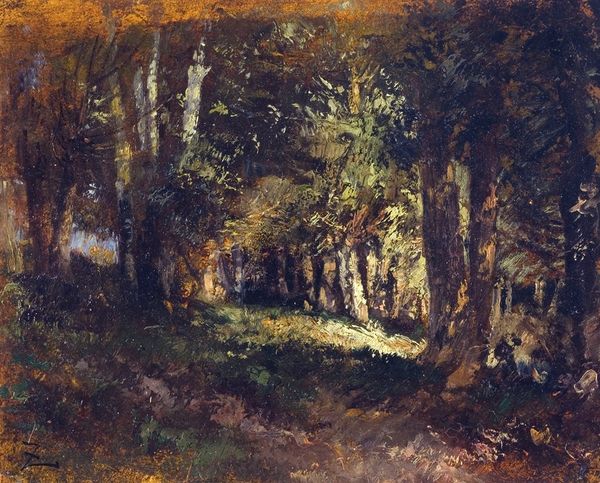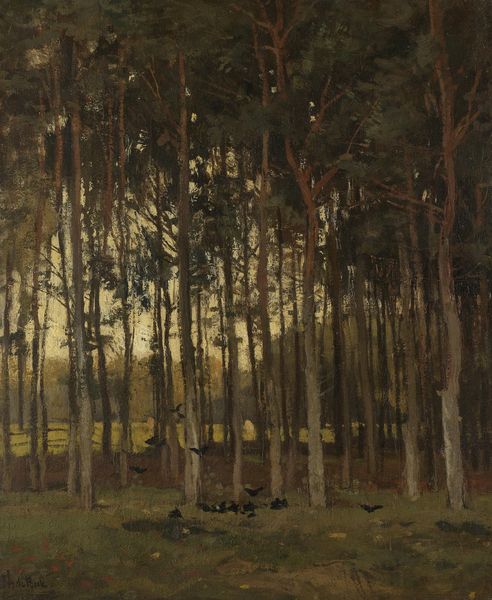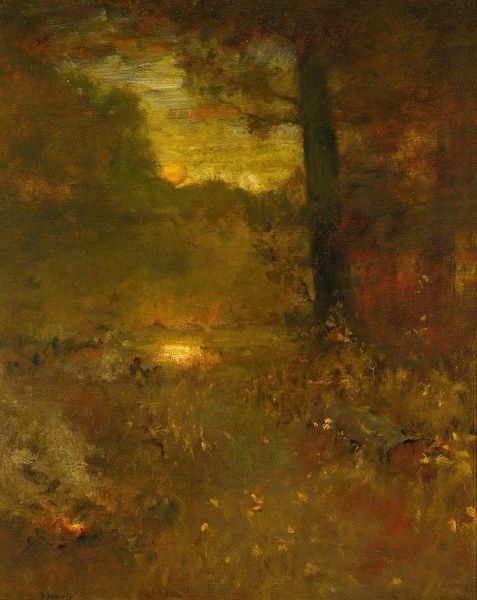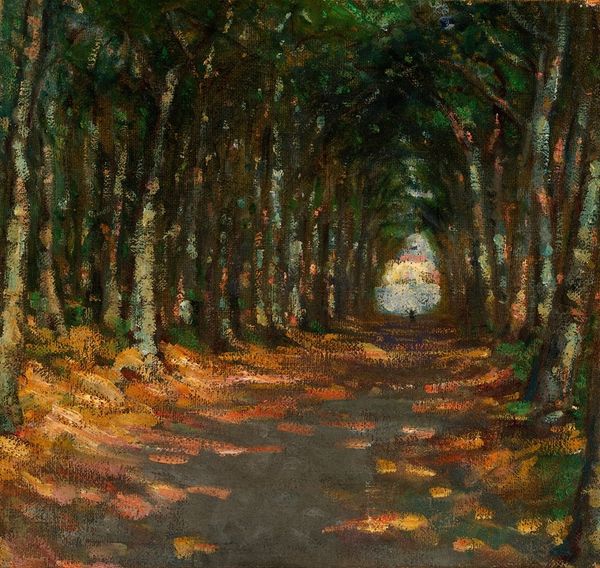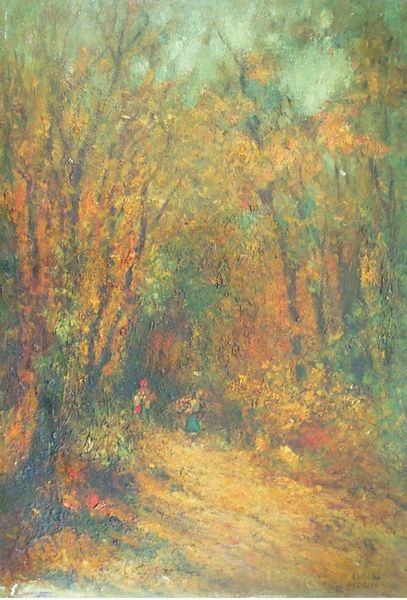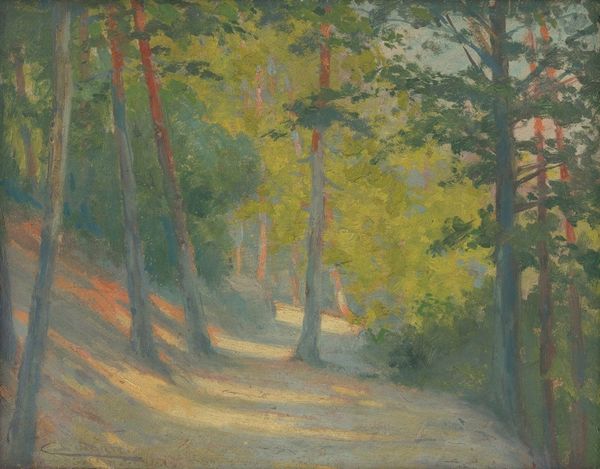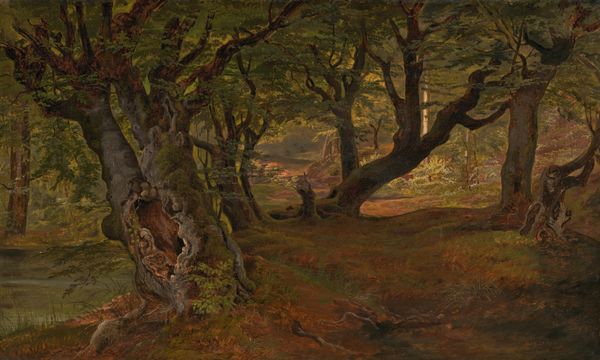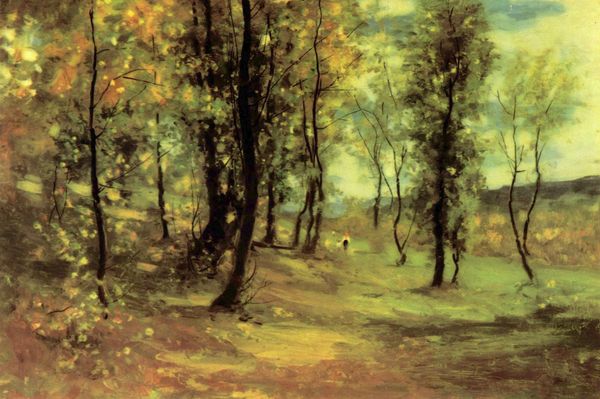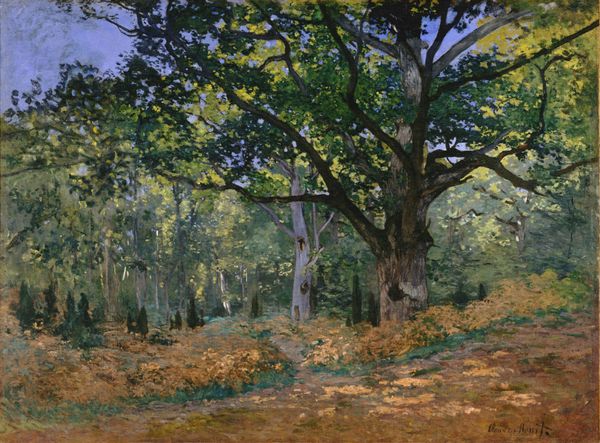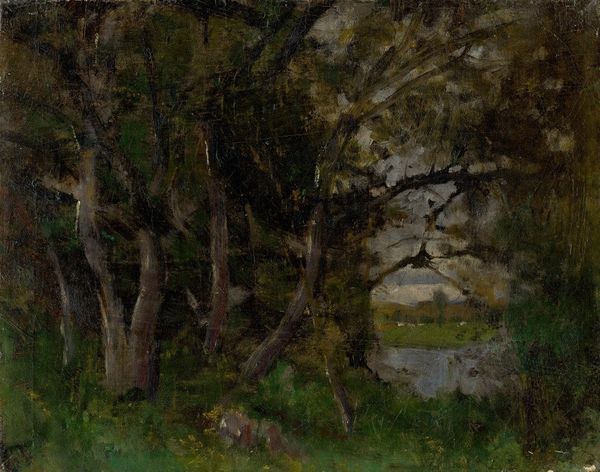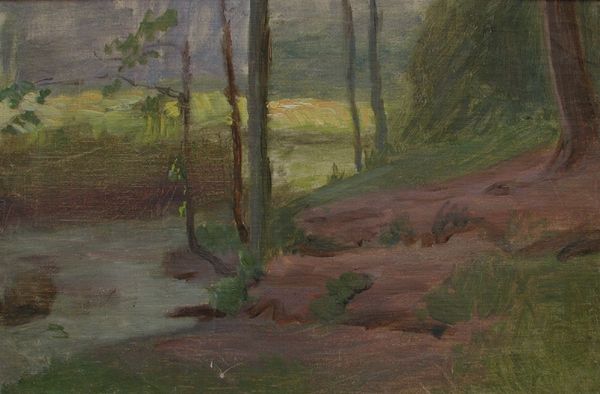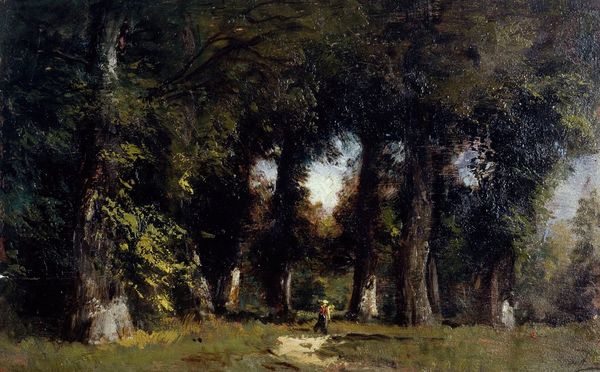
Copyright: Public domain
Editor: This is Robert Julian Onderdonk’s “Landscape Sketch” from 1909, an oil painting capturing a forest scene. There's a dreamlike quality to it; the colors feel muted and the brushstrokes are loose. What’s your read on this piece? Curator: Onderdonk, though working in Texas, aligns himself with the American Impressionist movement here. He's participating in the broader cultural interest of depicting nature as both beautiful and accessible. But is it truly accessible? Notice how the path is obscured. Is this simply about capturing a fleeting impression, or is something else at play? Editor: I see what you mean. It's not a welcoming path, is it? More mysterious. Curator: Exactly. Consider the late 19th and early 20th centuries. The rise of industrialization led to anxieties about nature being lost. Landscape painting, particularly *en plein air* works like this one, served as a visual reassurance, a way to possess and control nature on canvas. But the obscured path hints at nature’s unknowable depths. Editor: So, is it fair to say it's less about objective observation and more about the artist's subjective experience, shaped by the anxieties of his time? Curator: Precisely. The painting exists within a network of ideas about progress, nature, and the role of art itself. The "impression" captured is also a product of these forces. He is framing not just trees but cultural perceptions of nature at the time. Editor: That makes me rethink my initial read on its mood. I see now that those dreamlike qualities aren't just aesthetic choices; they reflect complex tensions about nature and society. Curator: Right. And understanding that context enriches our experience of the painting. Editor: Definitely! Thanks, I’ve never looked at impressionism quite like this.
Comments
No comments
Be the first to comment and join the conversation on the ultimate creative platform.

